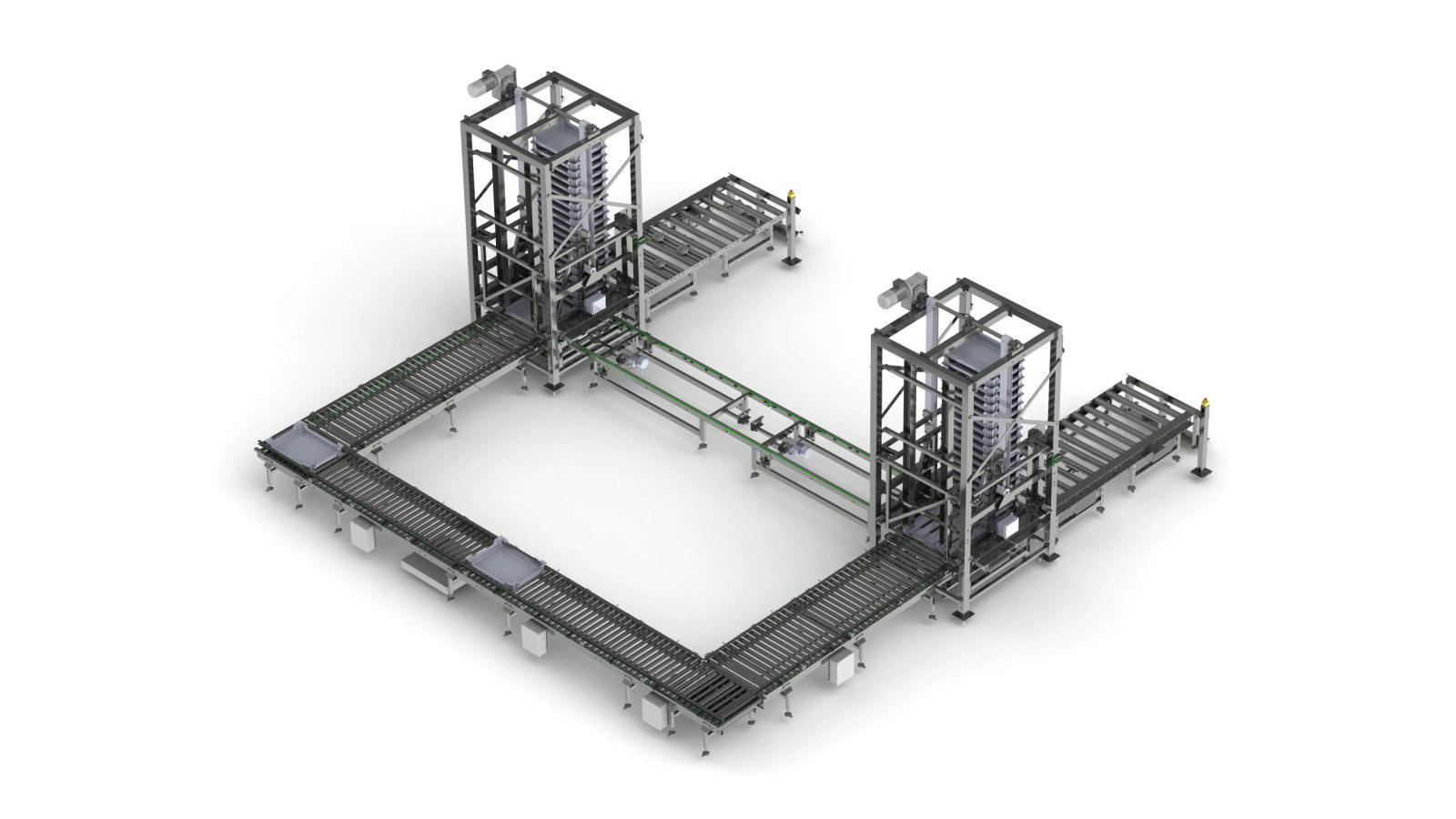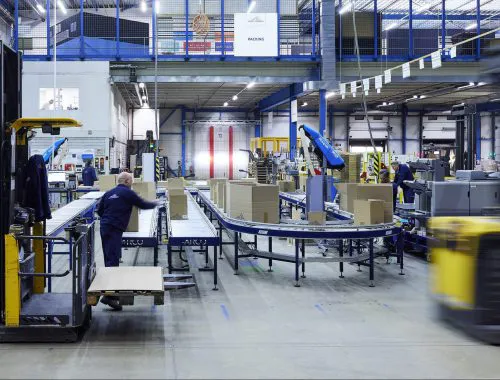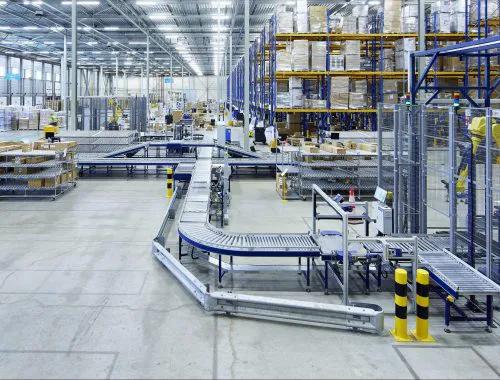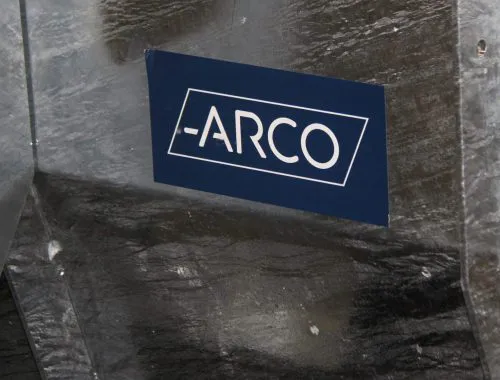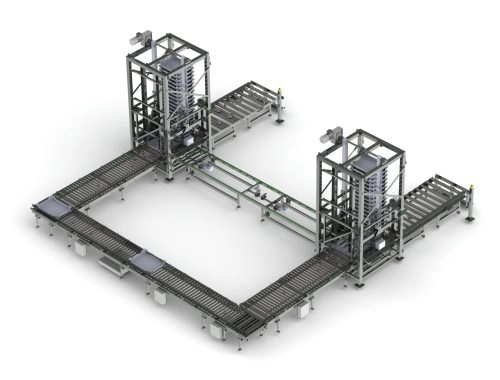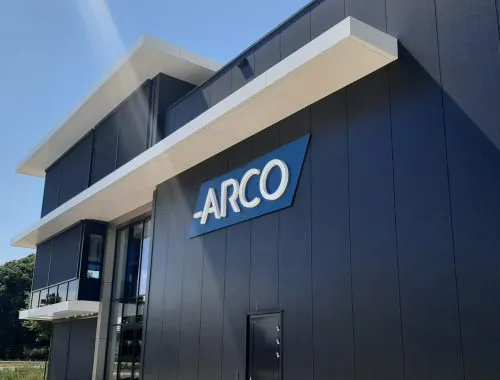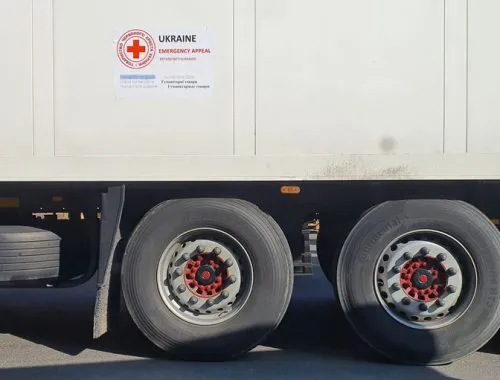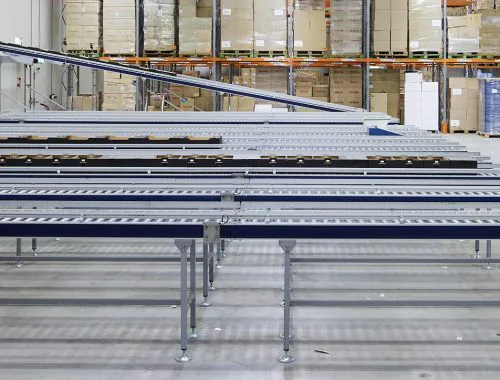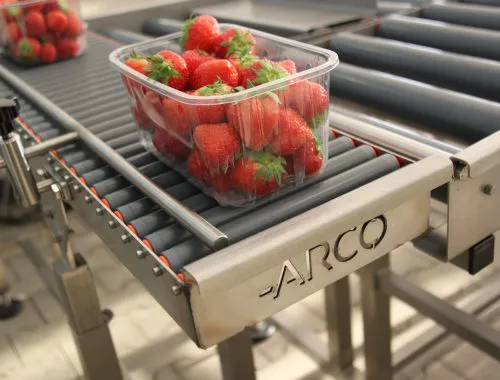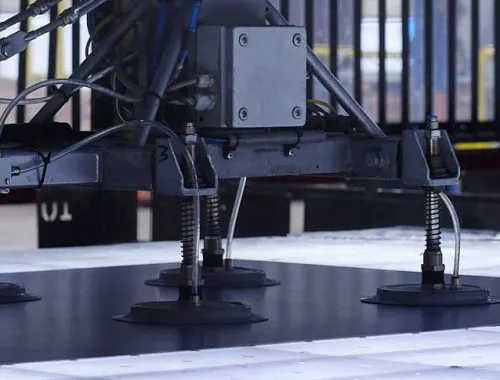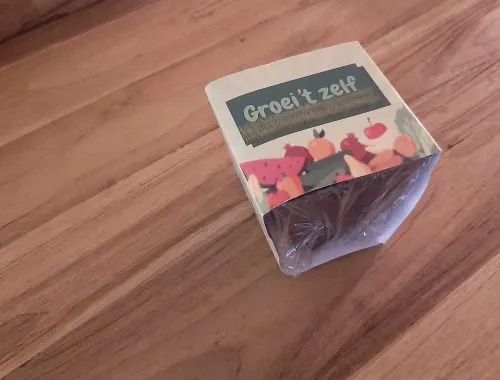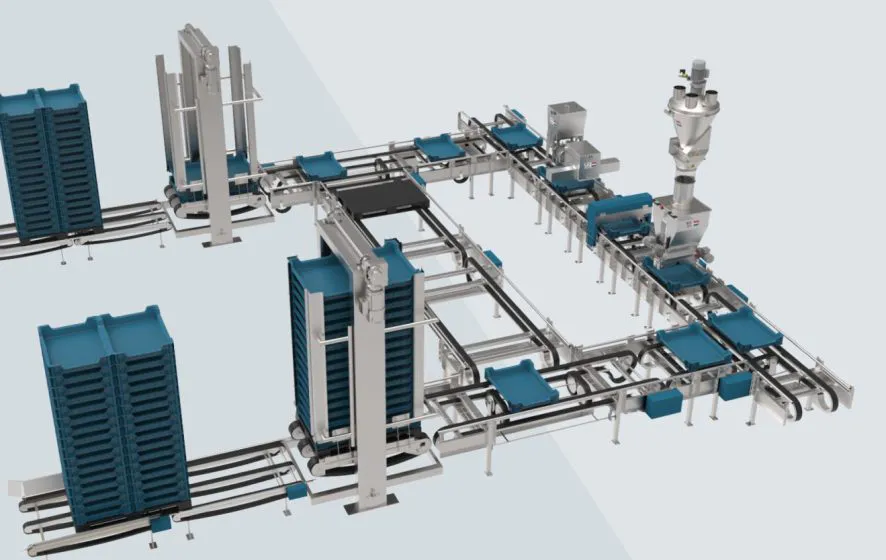
How the crate handling system works
To give a complete picture of how our crate handling system works, you will find below a step-by-step explanation. You can also see the steps visually in the image.
Step 1: The operator first uses a forklift truck to place the pallet with empty crates on the infeed roller conveyor. Next, the pallet arrives at a centring point. This centring point will automatically centre the pallet so that it is in the correct position.
Step 2: Next, the pallet is removed from under the stacks. Then, the empty crates are automatically are being de-stacked with the de-palletiser. The empty crates are then placed on a zone-controlled roller conveyor and the empty pallets are discharged through the side to the palletiser.
Step 3: An angled transfer unit ensures that the empty crates make their way correctly to the various filling positions.
Step 4: The crates arrive at the various filling positions. Here, the crates are filled with food for the insects.
Step 5: Finally, the crates continue their way towards the palletiser. Here, all full crates are stacked and placed on a pallet again. The crate handling system is a self-balancing system. This means that all pallets are re-used.
ARCO's crate handling system
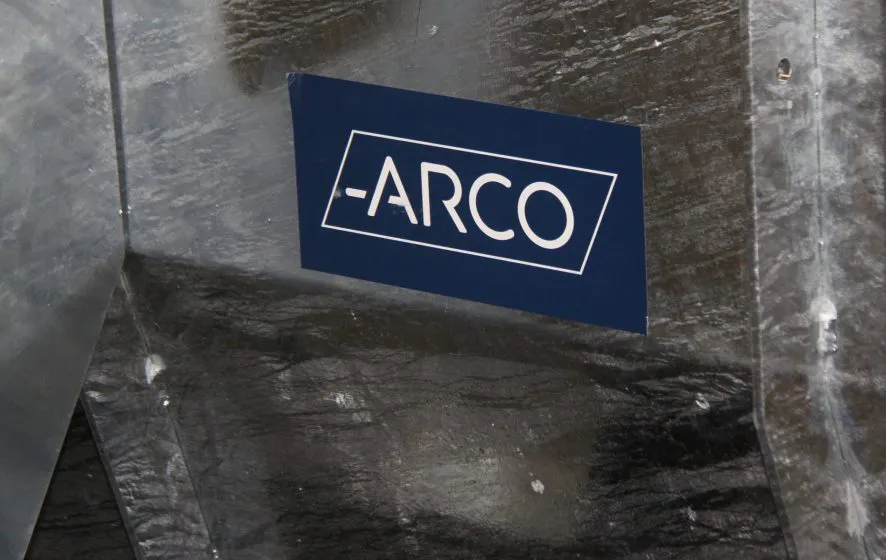
General information crate handling system
- Crate size: 800 x 600 x 190
- Capacity: 600-800 crates per hour
- Modular construction
- Speed checks
- Customization possible
- Execution: stainless steel
- Zone-controlled system, no crate damage

